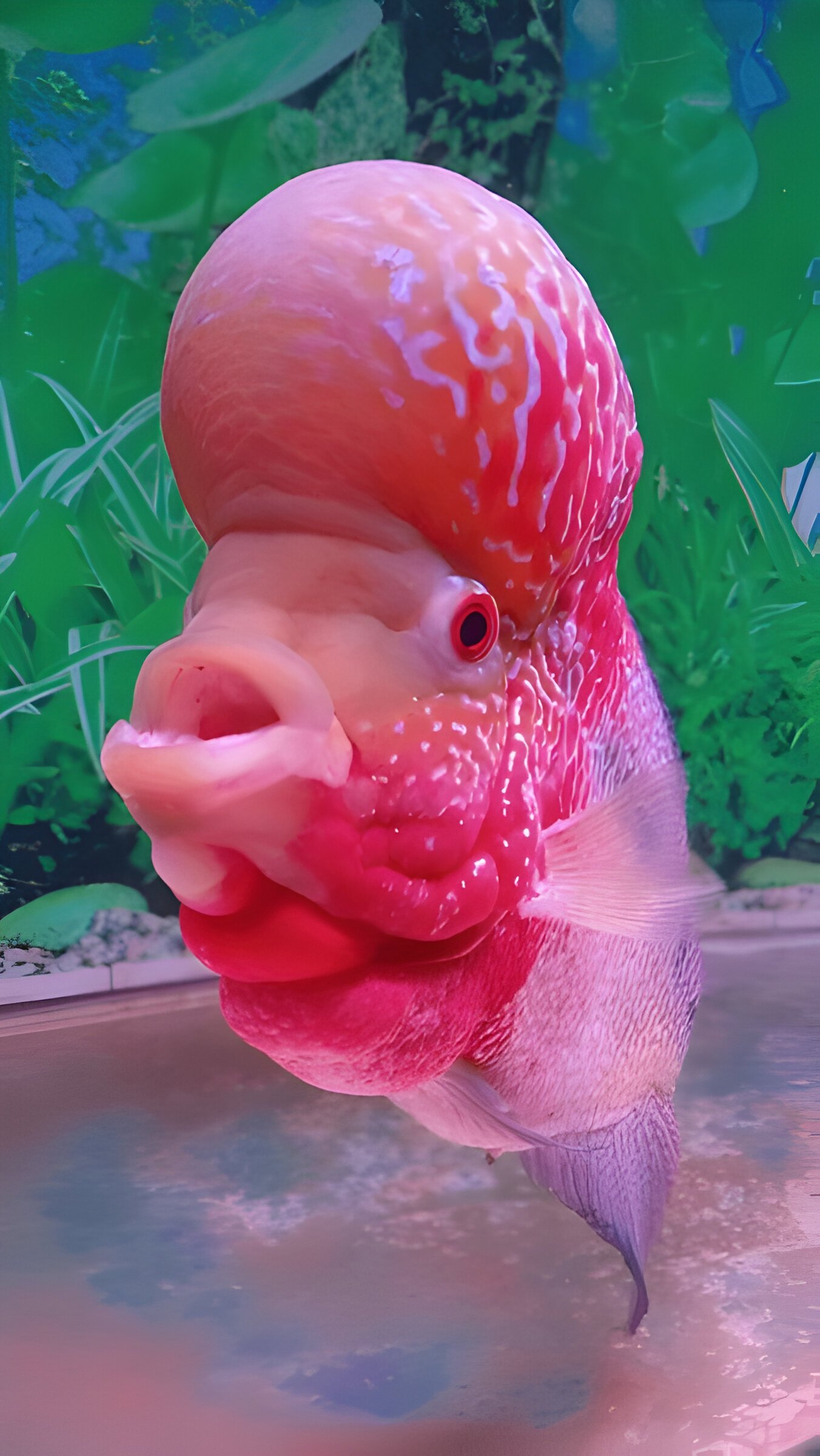Image Credit: ShutterStock
The fascinating world of marine life never ceases to amaze, and fish with big foreheads are no exception. These unique creatures, found in various parts of the globe from Japan to Madagascar, have captured the attention of divers, researchers, and internet users alike. With their distinctive appearance, often resembling human faces, these fish have become the subject of viral videos and scientific intrigue, sparking curiosity about their evolutionary adaptations and ecological roles.
From the majestic Napoleon fish of the Pacific Ocean to the quirky Asian sheepshead wrasse found near Tateyama, the diversity of fish with prominent foreheads is remarkable. This article delves into the different types of big-headed fish, exploring species like the dolphinfish and archerfish. It also examines the evolutionary benefits of large foreheads in fish, shedding light on how these features help them thrive in various aquatic environments, from the vast expanse of oceans to the unique ecosystem of Lake Tanganyika. By the end, readers will gain a deeper understanding of these fascinating creatures and their place in the underwater world.
Types of Fish with Prominent Foreheads
Asian Sheepshead Wrasse
This distinctive fish, found mainly in China and Japan, has a prominent forehead and chin. Growing up to 39.3 inches long, it’s known for its unique appearance. The Japanese varieties are sequentially hermaphroditic, born as females but capable of becoming males later in life.
Dolphinfish
Also called Mahi-Mahi, these colorful fish inhabit warm waters of the Atlantic, Pacific, and Indian oceans. They measure 33 to 55 inches and weigh 15 to 40 pounds. Male dolphinfish develop a prominent forehead, while females have rounded heads. Their vibrant colors range from golden-green to blue, with metallic patches on their sides.
Napoleon Fish
This endangered species, native to the Indo-Pacific, can grow up to 7.5 feet long. Like the Asian Sheepshead Wrasse, Napoleon fish can change gender as they age. They display age-related color changes, starting as bright orange females and potentially becoming green or blue males around nine years old.
Cyphotilapia Frontosa
Native to Lake Tanganyika in East Africa, these cichlids grow up to 1.1 feet long. Their most prominent feature is the hump on their head, which develops in males around three years of age. With a potential lifespan of 25 years, they display striking white or blue coloration with seven vertical bars.
Evolutionary Advantages of Large Foreheads in Fish
Enhanced Sensory Capabilities
Fish with large foreheads often have improved sensory abilities. Their enhanced olfactory bulbs allow for keen smell detection, with some species capable of sensing minute amounts of blood in water. The hammerhead shark’s unique head shape may improve its olfaction by spacing nostrils further apart. Additionally, some fish use electroreception to detect prey, like the paddlefish with its extended snout covered in electroreceptors.
Improved Hydrodynamics
Large foreheads in fish can contribute to better swimming efficiency. A streamlined head shape reduces hydrodynamic drag, allowing fish to move through water more easily. Some species have evolved elongated heads to increase buccal volume without significantly compromising swimming performance. This adaptation is particularly beneficial for mouthbrooding species, as it allows them to carry eggs while minimizing energy losses during locomotion.
Social and Mating Benefits
In certain fish species, a larger forehead or cranium can serve as a signal of fitness, intelligence, or social status. This feature may aid in mating and resource acquisition. For instance, some cichlid fish have developed prominent sexual dimorphism in adult head size, potentially related to mouthbrooding adaptations. These physical characteristics can play a crucial role in social interactions and reproductive success within fish populations.
Conclusion
Fish with big foreheads offer a captivating glimpse into the diverse world of marine life. Their unique adaptations, from enhanced sensory capabilities to improved hydrodynamics, showcase nature’s ingenious solutions to underwater challenges. These remarkable creatures have an influence on their ecosystems and play crucial roles in marine biodiversity, highlighting the importance of conservation efforts to protect these species and their habitats.
The study of fish with prominent foreheads opens up exciting avenues to explore evolutionary biology and marine ecology. Their distinctive features not only captivate our imagination but also provide valuable insights into the complex interplay between form and function in aquatic environments. As we continue to uncover the secrets of these fascinating creatures, we gain a deeper appreciation for the wonders that lie beneath the waves and the need to preserve our oceans’ rich biodiversity.
Also Read: fighter jet crashes miramar
FAQs
Q: What fish species is known for its large forehead?
A: The fish featured in the video with a notably large forehead is the Asian sheepshead wrasse.
Q: Can you describe the fish known for its prominent forehead bump?
A: The humphead wrasse is easily recognizable due to its large forehead bump and distinctive big lips. It displays vibrant colors including green, blue, and purple. Seeing one in person is a memorable experience.
Q: What type of goldfish has a large forehead?
A: The oranda goldfish is renowned for its significant fleshy outgrowth on its head and face, known as a “wen.” These goldfish, which can have either metallic or matte scales, are very similar to veiltail goldfish and are highly popular among aquarists.
Q: What is the name of the aquarium fish with a notable head bump?
A: Flowerhorn cichlids are ornamental aquarium fish recognized for their bright colors and distinctively shaped heads, which feature a nuchal hump. These fish are hybrids, like the blood parrot cichlids, and only exist in the wild due to being released from captivity.
























I don’t think the title of your article matches the content lol. Just kidding, mainly because I had some doubts after reading the article.